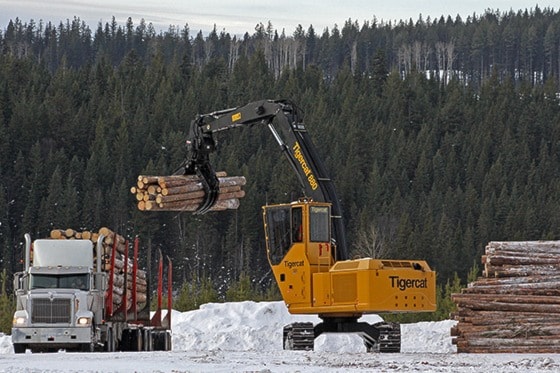A new sawmill being built in Fort St. James will process only trees killed by the mountain pine beetle (MPB) epidemic.
No other mill is specifically targeting the beetle-killed pine in the Fort St. James Forest District, said Andy Thompson, manager of Northern Interior Timber Ltd.
"There's a ready supply of that bug-killed timber," he said.
"Nobody else here has that particular model right now."
By developing contracts with mills like Conifex, Thompson is buying and gathering beetle-killed pine from areas where healthy green timber is being harvested.
Prior to the contracts, a substantial amount of beetle-killed pine was being left in the forest and going to waste, said Thompson.
"We're providing an outlet for the loggers to sell it to," he said.
The new mill will process salvaged timber into rough-cut cants, square pieces of lumber measuring up to eight by eight inches in size, that can be used for construction purposes.
According to the Ministry of Forests, Lands and Natural Resource Operations, "beetle timber" can retain commercial value from five to 18 years after being attacked by the MPB, and be used as framing lumber and energy generation products, such as wood pellets.
"Allowable annual cuts have been increased as an emergency measure for salvaging or recovering the greatest value possible from beetle-attacked timber," the ministry's website says.
"The temporary increases have resulted in a surge in harvesting activity in some areas of the central Interior. However, significant reductions to these allowable annual cuts are inevitable as timber supplies decline and the (MPB) epidemic finishes running its course."
Despite the downward forecast, there is reason to be optimistic about the forestry sector in the short-term, said Thompson, as B.C. timber prices rise exponentially along with demand in U.S. and Asian markets.
"We need to get up and going," said Thompson, who manages another mill in Burns Lake.
When operations begin around March 1, Northern Interior Timber Ltd. will process about 60,000 board feet per day, compared to larger mills capable of logging up to 1-million square feet per day, said Thompson.
"That's a big difference," he said.
But given its smaller size and capacity, operations will be easier to sustain as the B.C. timber supply continues to decline, said Thompson.
The mill has employed about five or six people, including electricians and carpenters, since construction began in September 2012. Once built, between eight and 10 people will work at the mill full time.
Thompson's business plan adheres to a European-style approach to utilizing timber and by-product in order to reduce waste and extend the mill's operating life. As a strategic move to maximize profits and cut down travel expenses, the mill is being built within the targeted timber supply area.
"We didn't build in Prince George or Vancouver. We built it here, close to where the bug kill is," said Thompson.
